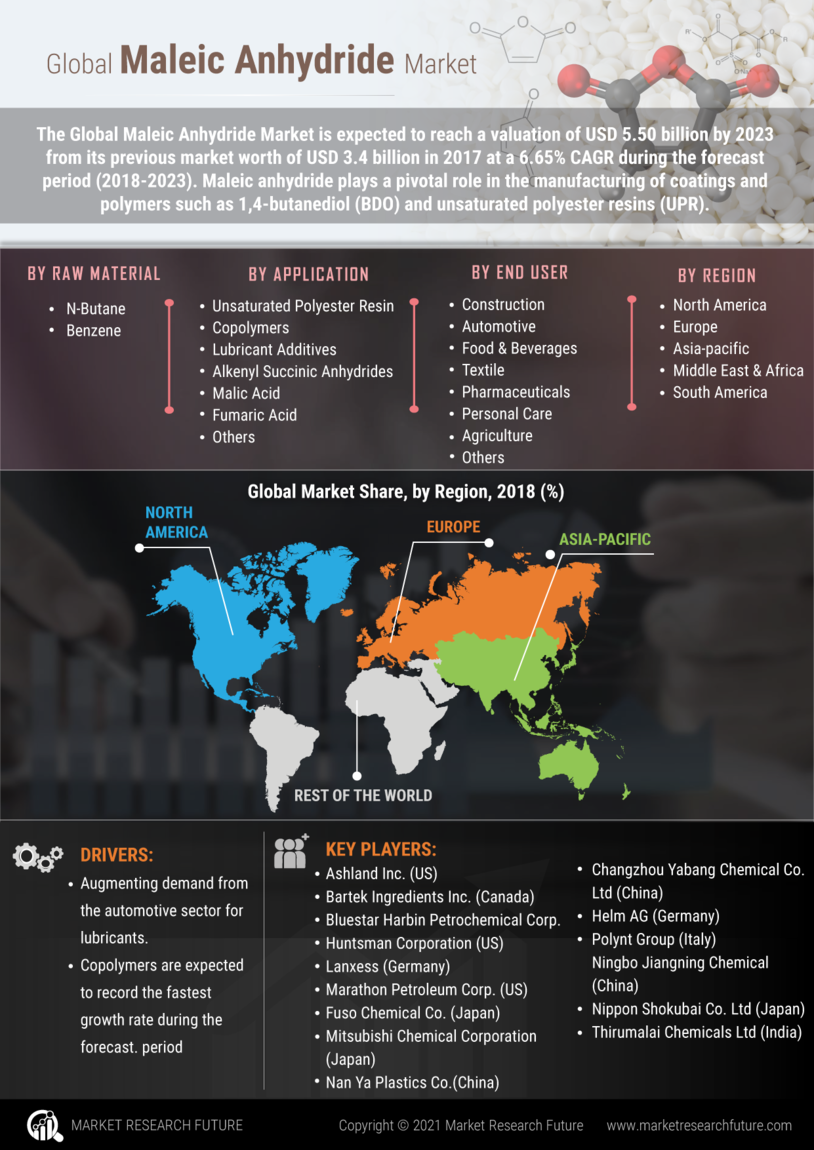Growth in Construction Activities
The construction industry is witnessing a resurgence, which appears to be a key driver for the Maleic Anhydride Market. Maleic anhydride is integral in producing various construction materials, including adhesives and sealants. The Maleic Anhydride Market is expected to grow at a compound annual growth rate (CAGR) of approximately 5% through 2025, thereby increasing the demand for maleic anhydride-based products. This growth is likely to be fueled by urbanization and infrastructure development projects, particularly in emerging economies. Consequently, the Maleic Anhydride Market is poised to benefit from this expansion, as construction companies seek high-performance materials to meet evolving standards.
Advancements in Polymer Production
Technological advancements in polymer production are likely to serve as a catalyst for the Maleic Anhydride Market. The development of new polymerization techniques has enhanced the efficiency and quality of maleic anhydride-based polymers, making them more attractive for various applications. These advancements are expected to lead to an increase in the production capacity of maleic anhydride, thereby meeting the rising demand from industries such as automotive, construction, and consumer goods. As of 2025, the market for maleic anhydride polymers is projected to grow significantly, indicating a positive outlook for the Maleic Anhydride Market as manufacturers leverage these innovations to enhance product performance.
Rising Demand in Automotive Sector
The automotive sector is experiencing a notable increase in demand for lightweight materials, which is likely to drive the Maleic Anhydride Market. Maleic anhydride is utilized in the production of unsaturated polyester resins, which are essential for manufacturing composite materials used in vehicles. As manufacturers strive to enhance fuel efficiency and reduce emissions, the incorporation of these materials is becoming more prevalent. In 2025, the automotive industry is projected to account for a significant share of the maleic anhydride consumption, potentially exceeding 30% of the total market. This trend indicates a robust growth trajectory for the Maleic Anhydride Market, as automotive manufacturers increasingly prioritize sustainable and efficient materials.
Increasing Use in Agricultural Chemicals
The agricultural sector is increasingly adopting maleic anhydride in the formulation of agrochemicals, which may significantly influence the Maleic Anhydride Market. This compound is utilized in the production of various pesticides and herbicides, enhancing their effectiveness and stability. As the global population continues to rise, the demand for food production is expected to increase, leading to a heightened need for agricultural inputs. In 2025, the agrochemical segment is anticipated to represent a considerable portion of the maleic anhydride market, potentially around 20%. This trend suggests that the Maleic Anhydride Market will likely experience sustained growth as agricultural practices evolve to meet food security challenges.
Regulatory Support for Sustainable Practices
Regulatory frameworks promoting sustainable practices are likely to bolster the Maleic Anhydride Market. Governments worldwide are increasingly implementing policies aimed at reducing environmental impact, which may encourage the use of maleic anhydride in eco-friendly applications. This compound is often favored for its lower environmental footprint compared to alternative chemicals. As regulations tighten, industries are expected to shift towards more sustainable materials, potentially increasing the demand for maleic anhydride-based products. By 2025, the influence of regulatory support is anticipated to be a driving force in the Maleic Anhydride Market, as companies adapt to comply with evolving environmental standards.


















Leave a Comment